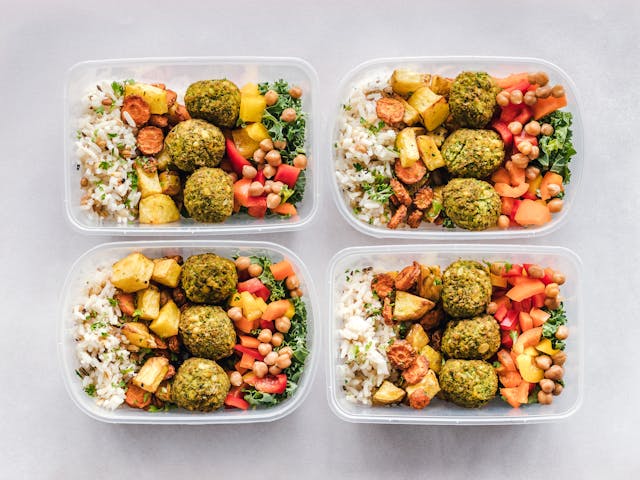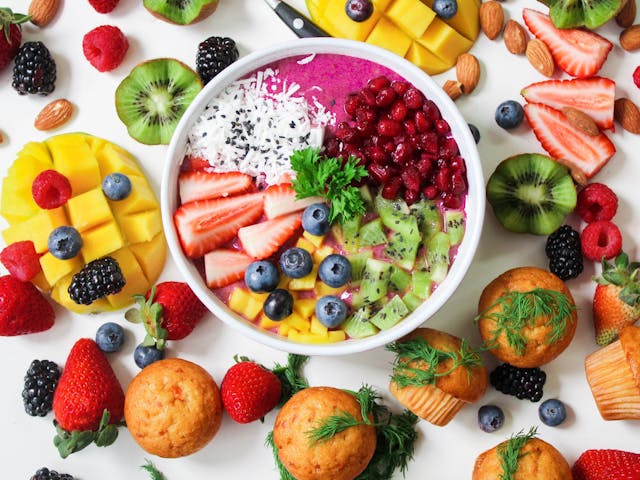Quit smoking diet plan: The importance of eating healthy
Choose food that is good for you

A healthy diet begins before you even go to the supermarket. Look for recipes that use healthier ingredients. You can shop for foods that are good for you and make you feel good if you plan ahead.
Make plans to eat well
Eating well gives your body the nutrients it needs every day and lowers your risk of heart disease and other health problems.
Think about how many meals you’ll need for the week and how much time you’ll have to make them. Make a list of the things you’ll need to buy to make those meals. Then, try to stick to what’s on your list when you go shopping.
Try to purchase fresh, unprocessed foods wherever and whenever possible.
When you buy packaged foods, read the Nutrition Facts on the label to find out what they contain. Salt, sugar, and saturated fats are often hidden in packaged foods. Often foods with large ‘natural’ or ‘healthy’ claims on the packaging can contain high levels of these.
Make a plan for eating well
Eating well is an important part of being healthy as a whole. Setting goals is one way to help you eat better.
For a healthy eating style, everything you eat and drink is important. Think about what you eat now and how you could change it. What changes to the way you eat will help you choose healthier foods?
Keep track of what you eat and drink to see if you have any unhealthy habits. Keeping a food diary helps you figure out what you could change about the way you eat to help you reach your goals.
You don’t have to completely change what you eat all at once. Setting a number of small goals may help. Think of changes that are possible, good, in your control, and specific.

For example, “Cut up veggies and fruit at night so I can pack them in my lunch the next day,” or “Eat a meatless dinner once a week, substituting veggies for the meat.” Here are some other goals that might work for you or give you ideas for your own:
- Fill half of your plate with fruits and vegetables of different colours.
- Switch to fat-free/skim milk, or milk alternatives with no added sugar such as soy, oat or almond milk.
- Make whole grains half of the grains you eat.
- Drink water instead of soft drinks, juice, cordial, or flavoured milks.
- Pick a variety of protein foods that are low in fat.
- Every week, eat some fresh seafood.
Giving yourself a reward for each goal you reach will make you look forward to something – just don’t use food as the reward. Treat yourself by spending more time with a friend, trying out a hobby you’ve always wanted to, or doing something active.
Or you could combine rewards, like taking a yoga class with a friend or going on a bike ride together.
Choose your food and drink wisely when out or at work
When you’re out for a night with friends, alcohol is usually in the mix, and it can be hard to avoid.
But, if you’re trying to stay on track with your diet, it’s best to cut back on it as much as possible.
Alcohol is high in calories, can increase your appetite if consumed in small amounts and lowers your willpower, making you more likely to stray from your healthy eating plans.
Taking a break from alcohol for a few weeks or setting aside alcohol-free days each week can make a big difference.
Your true friends will totally get it—they want what’s best for you and will support your choice for a healthier lifestyle. So don’t feel pressured; just enjoy the night in your own way.
If you’re offered a fizzy drink as an alternative to alcohol, go for a sugar-free option.
Sugary drinks can add extra calories quickly, so it’s best to choose something without sugar—like water, unsweetened tea, or a diet fizzy drink.
This way, you won’t be piling on unnecessary calories throughout the day.
At work, stress can often make you want to eat more. You might be tempted by colleagues suggesting lunch at a restaurant or grabbing a snack during a break.

To avoid overeating, aim for three balanced meals a day, spaced out just right so you don’t get too hungry.
Keep a healthy, low-calorie snack handy, but only in small amounts, to curb cravings and help manage your hunger between meals.
Even on your way home from work, temptation is everywhere. Walking past a shop after work can leave you facing aisles of biscuits or other snacks.
Instead of browsing for a ‘healthy’ snack, keep it simple with fruits or vegetables for in-between meals. They’re low in calories, full of nutrients, and help you reach your daily nutritional goals.
It’s an easy goal to stick to, as you’ll quickly see if you’re on track and steer clear of those tempting snacks that could throw your diet off course.
Here’s a simple tip to dodge those temptations: avoid supermarket aisles packed with cakes, biscuits, and sweets.
Sure, those end-of-aisle deals might look like a steal, but they’re usually just unhealthy goodies loaded with fat and sugar. If you stick to your plan, you’ll find it much easier to stay on track.

Chat to a GP and
quit smoking today
no payment or purchase required
